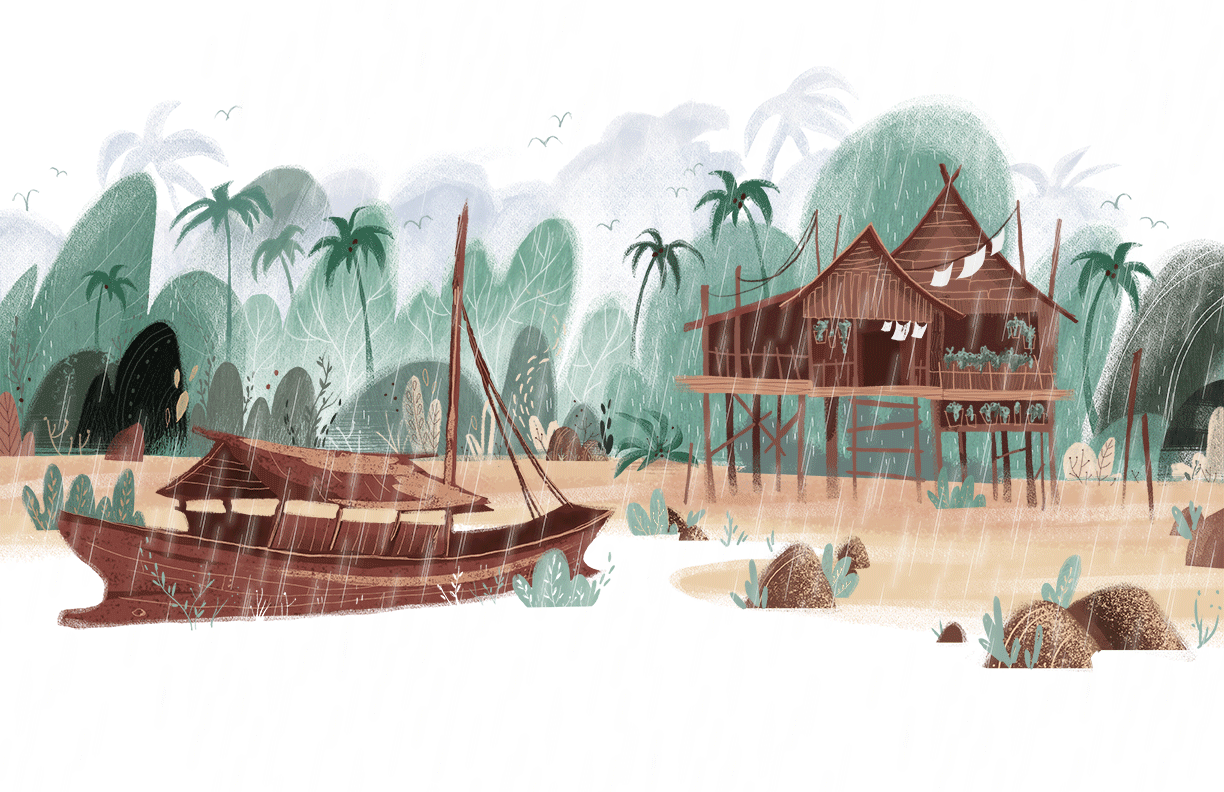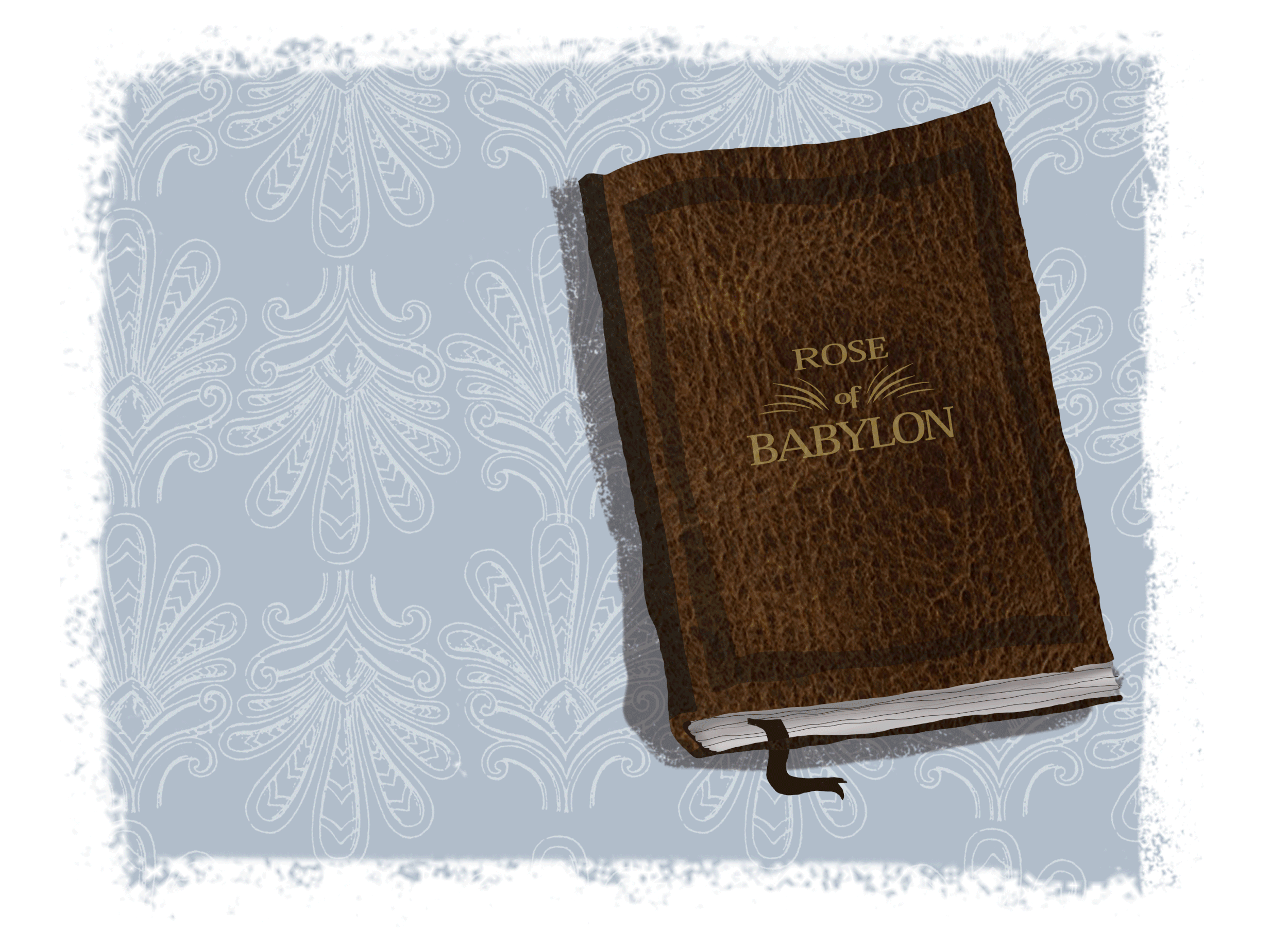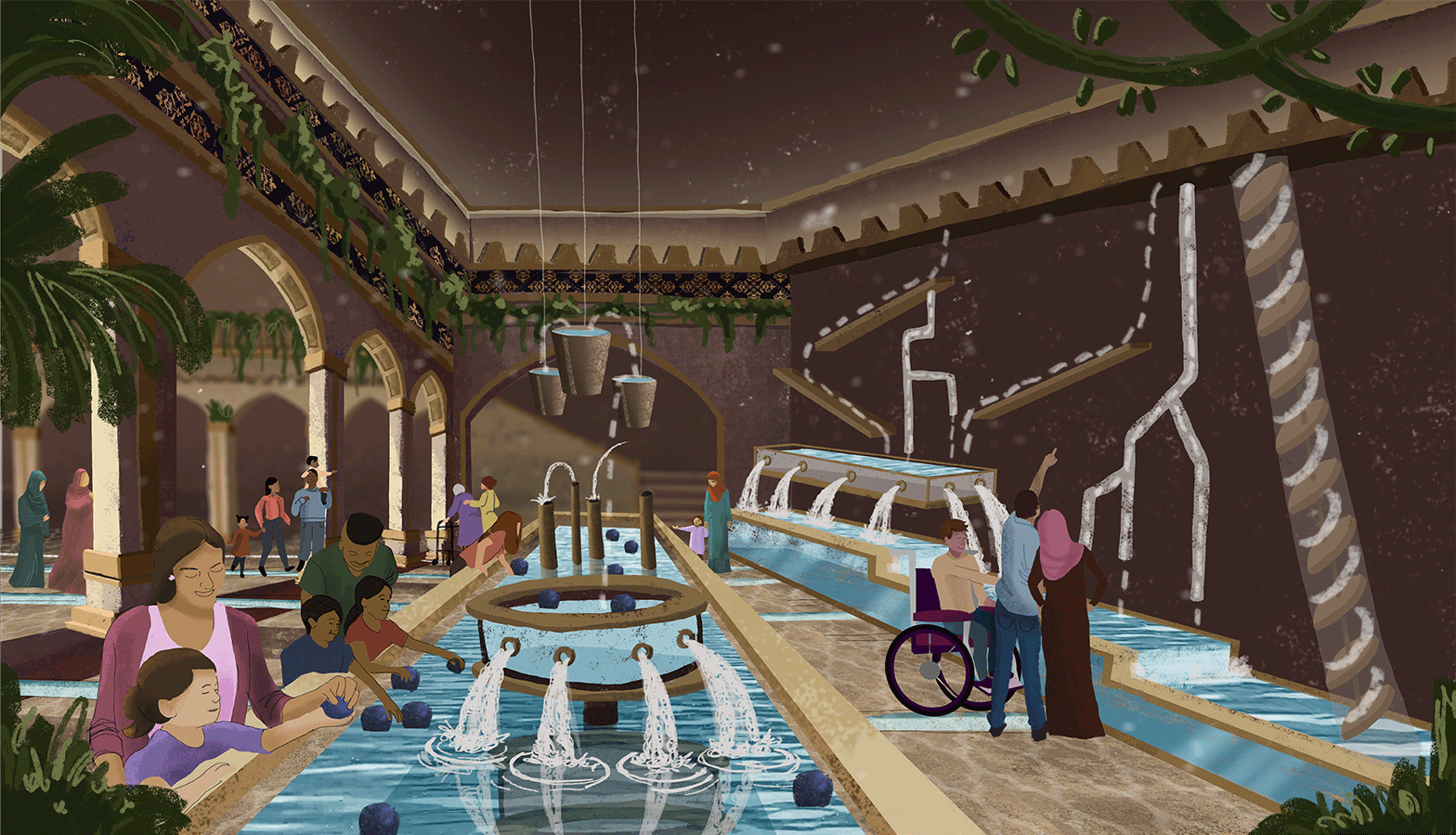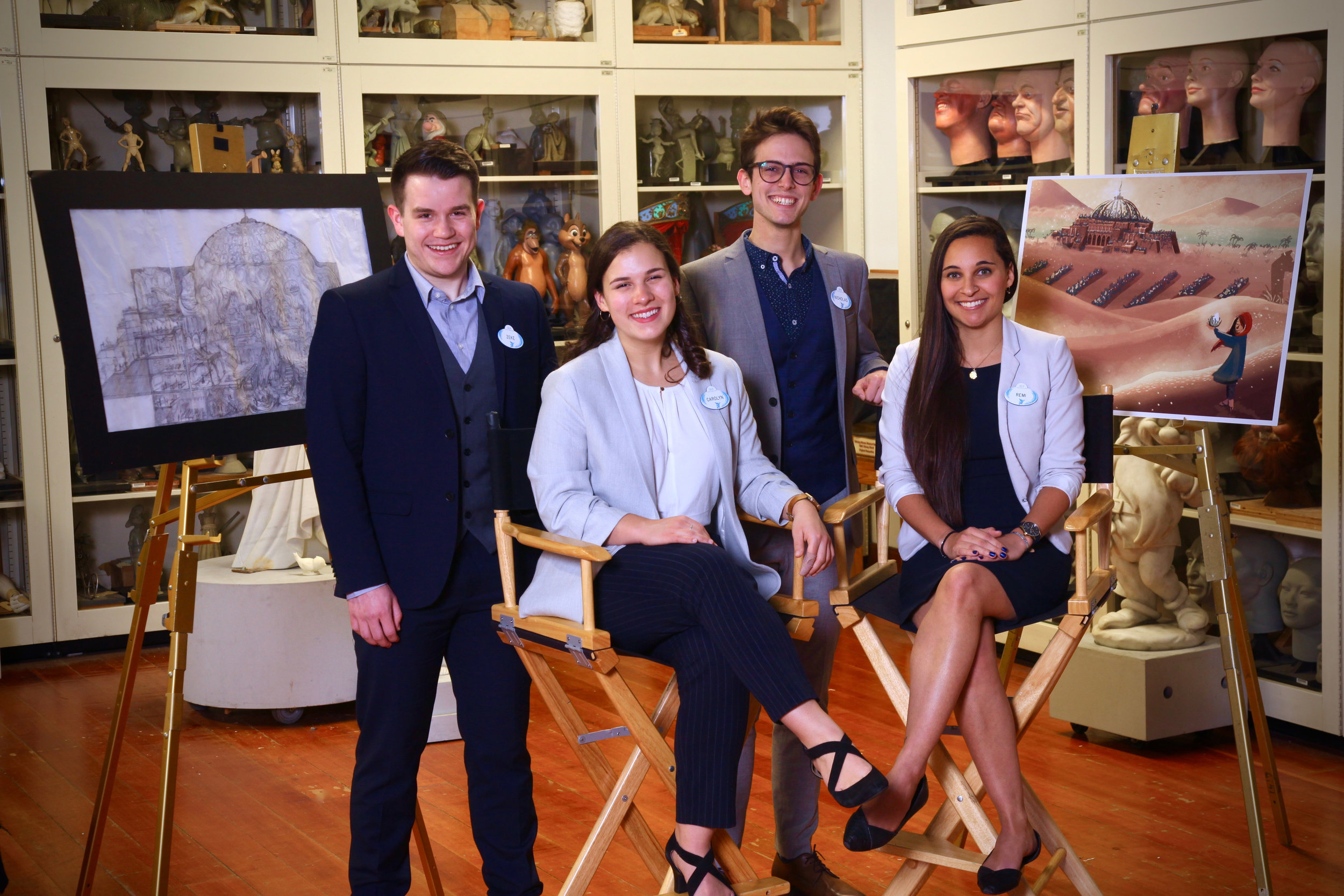Image created by Remi Jeffrey-Coker
One hundred years after the fall of The Hanging Gardens of Babylon, a family of traders crashed into the bank of the Euphrates river. As her parents and siblings scattered across the desert searching for refuge, the youngest of the family, a small girl named Izdehar, wandered into the wreckage of their ship.
As she searched, a small withered plant tumbled across the desert and through the broken vessel to stop at her feet. She felt pity for the shriveled plant and watered it hoping to revive it. The plant began to open to reveal a small piece of stone which Izdehar ran her fingers over and read the engraving “To my love Amytis”. The stone and plant immediately began to glow with a light that cascaded across the desert, turning the once barren land around the crashed ship into a flourishing oasis of plant life and natural resources.
Inside this plant, a plant we know today as the Rose of Jericho, hid the last known relic of the Hanging Gardens of Babylon, placed there by the Queen during the final days of this wonder of the ancient world. Within this relic remained the magic, essence, and life of the Hanging Gardens. As time passed, researchers and explorers settled around the shipwreck and began to exchange knowledge and culture. Now hundreds of years later, the mysteries of this forgotten ancient wonder where magic, agriculture, and technology intertwine, are now explorable at The Rose of Babylon.
The Rose of Babylon is a one-of-a-kind botanical Inquisitorium that offers eclectic entertainment for guests of all ages. Located on the banks of the Euphrates river, our experience stands in a budding tourist location along with remnants of middle eastern history, including the ruins of ancient Babylon and the Ishtar Gate. The Rose of Babylon is easily accessible to nationals in Iraq because of the major cities surrounding the site.























































































